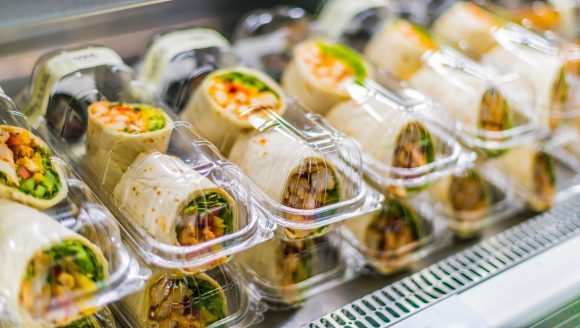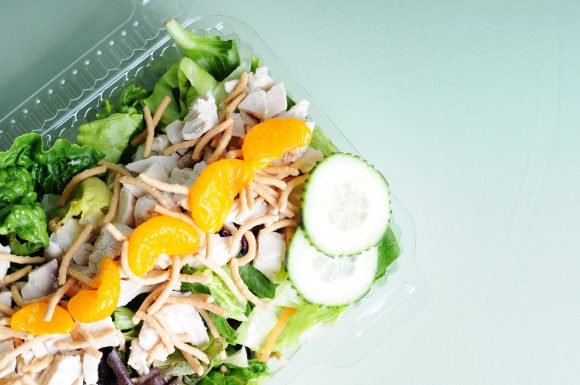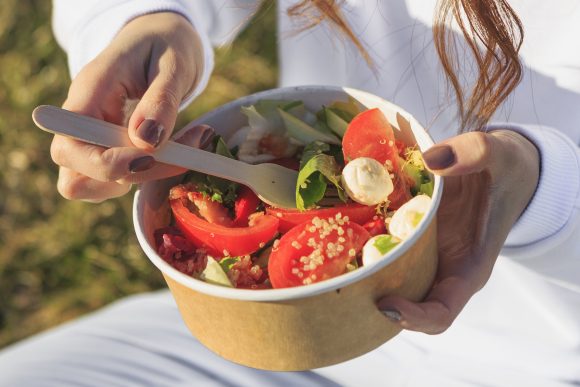
From Nestle Professional Trends and Insights
Grab-and-go is growing fast due to customer demand for tasty food that’s instantly available. Discover ways operators are responding—supermarkets, c-stores, hotels, colleges, and employee dining, and restaurants at virtually every price point.
How do you court busy customers and build sales? Make takeout more convenient and portable with grab-and-go options.
According to Datassential, grab-and-go (prepared foods for takeout that don’t need to be pre-ordered) in restaurants at all price points grew 67.1% between 2013 and 2017. Penetration, however (the number of establishments offering some type of grab-and-go) was only 0.4%, indicating plenty of room for additional growth.

Opportunity exists in every category, adds the research firm, but supermarket delis, convenience stores, and grocerants are already colonizing the market. Among restaurants, the potential is strongest in QSR and especially fast casual venues, but sales are also growing in midscale and casual restaurants. In noncommercial settings, there’s also grab-and-go demand in colleges and universities, employee dining, and healthcare—where hospital visitors as well as employees and staff can grab a meal to go to help ease the burden of a hectic day. Self-serve pantries are becoming more popular in hotels, late-shift B&I venues, and other places where there is a need for 24/7 food service. And dining outlets in airports and other travel hubs are also getting into the act, especially now with in-transit meal service cutbacks
In short, wherever there are time-crunched consumers around, there’s potential for grab-and-go sales.
Operational Challenges
There are a lot of ways to do grab-and-go, from dedicated “express” selling areas adjacent to dine-in, to kiosks, carts, and pantries. But for most food service operators—even those with a robust takeout business—grab-and-go represents a different line of business, with its own set of operational issues. A few things to consider:
Pay Attention to Merchandising—Using colorful, attractively prepped ingredients and sturdy good-looking packaging are particularly important with grab-and-go, where every choice is visible to customers. Investing in attractive display equipment such as upscale cases can also be helpful.
Freshness Counts—Establish optimal hold times for prepared items such as premade sandwiches, salads, and pizza, and log or time-stamp them so they can be taken off the selling floor promptly. Track sales movement carefully in order to avoid waste and manage demand.
Embrace the Value of Trial and Error—All menus are living, breathing things, and grab-and-go items may need a little extra coaxing. If a sandwich isn’t selling on a roll, try recasting it as a wrap, or change the packaging so the item is more visible
Sweat the Small Stuff—Make items such as disposable cutlery, napkins, bags, condiments, lids for cups, and other necessities for off-premise dining available and in a convenient spot.
Make Payment Easy—Consider having a dedicated cashier, payment-enabled app, or other option to help speed customers out the door.
Consider Meal Kits—Take a page from the meal-kit model and package ingredients for some of your most popular items (with detailed instructions) so that customers can prepare them at home. Some restaurants are even delivering these kits through third-party delivery services.

The Grab-and-Go Selection
Anything that can be packed up for pickup or served quickly at the point of purchase is fair game for a grab-and-go program. Above all, food must hold well and remain appetizing throughout its intended window of availability.
Here are some food selections things that work particularly well for grab-and-go:
- Breakfast items (sandwiches, baked goods)
- Meal-in-one bowls
- Sandwiches
- Salads
- Composed snack trays (cheese and crackers)
- Serve-yourself soup and chili
- Sweet and savory yogurt parfaits
- Prepared full-service deli items (pasta and grain salads, antipasto)
- Packaged prepared foods for a hot case (pot pies, wings, macaroni and cheese)
- Pizza by-the-slice or whole take-and-bake pizzas
- Large-format foods for self-service catering (rotisserie chicken, vegetables and dips, meat and cheese platters)
- Sushi
- Chips and other packaged snacks for impulse sales
- Soft-serve and frozen yogurt
- Fruit
- Cookies, cupcakes, and other individually wrapped baked goods
- Pre-portioned smoothies, iced coffee, and other chilled beverages
- Self-service hot and cold beverages









